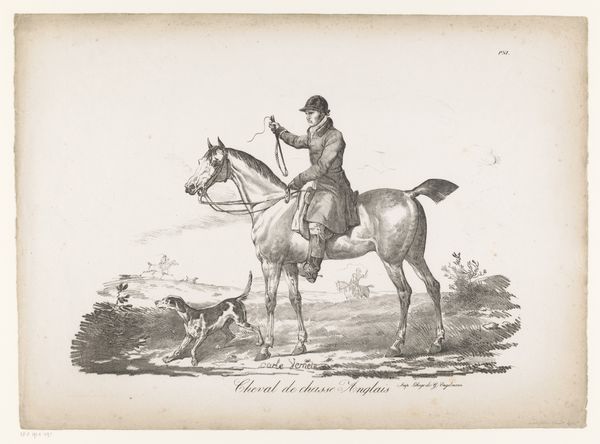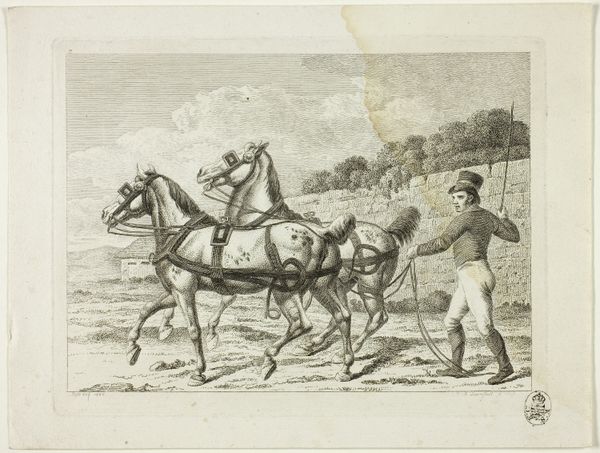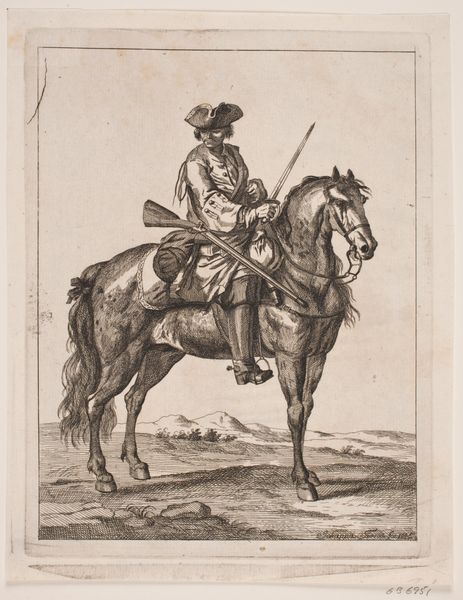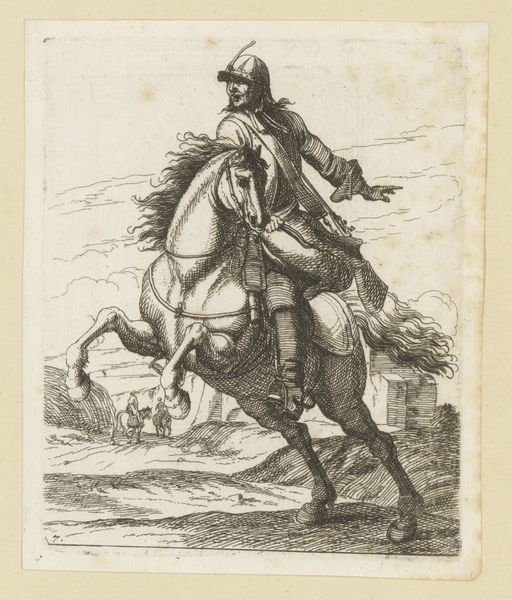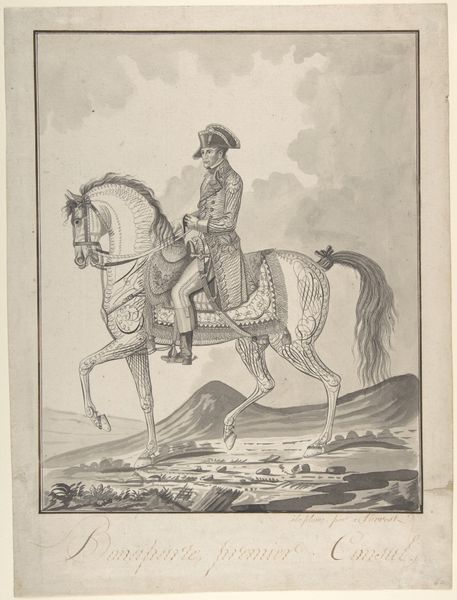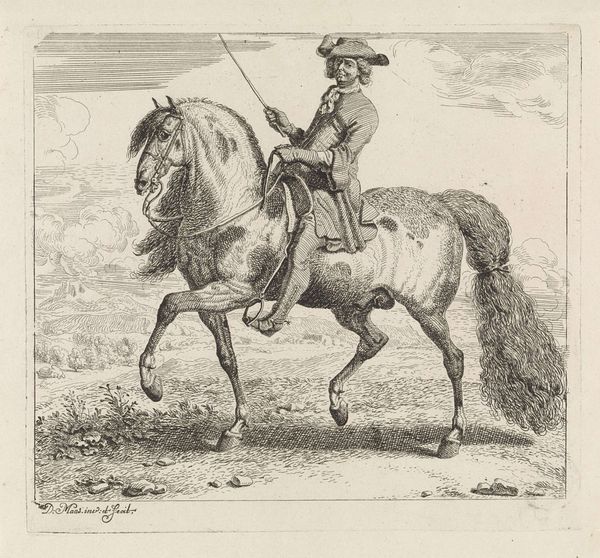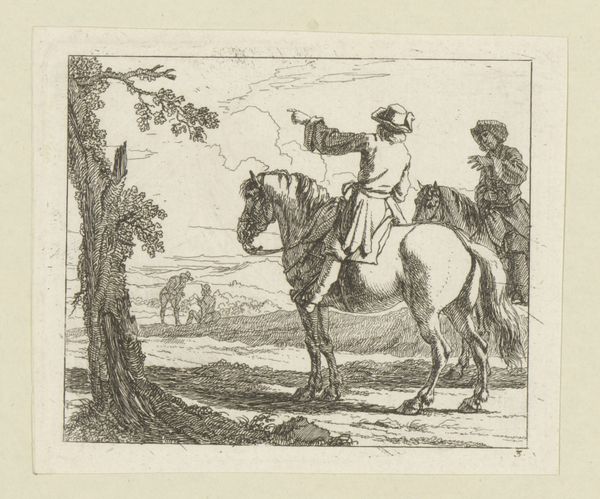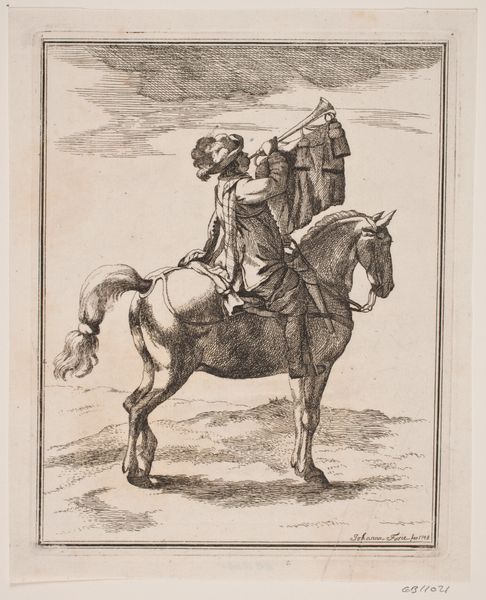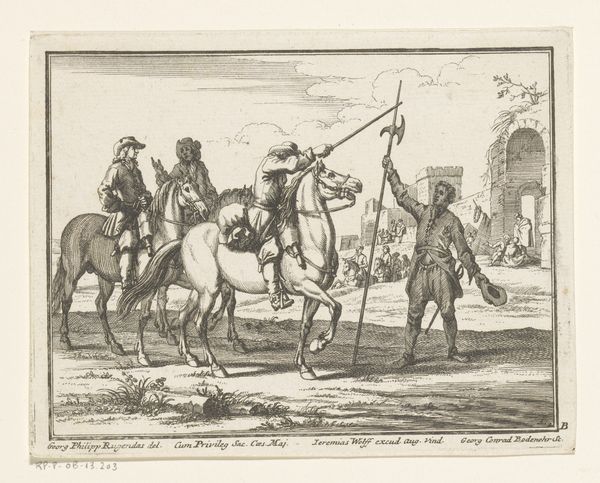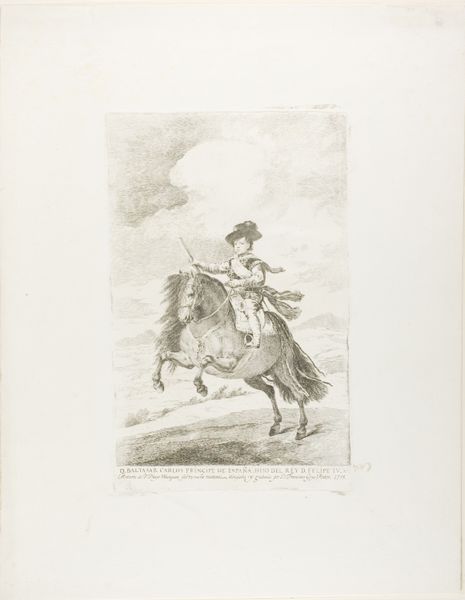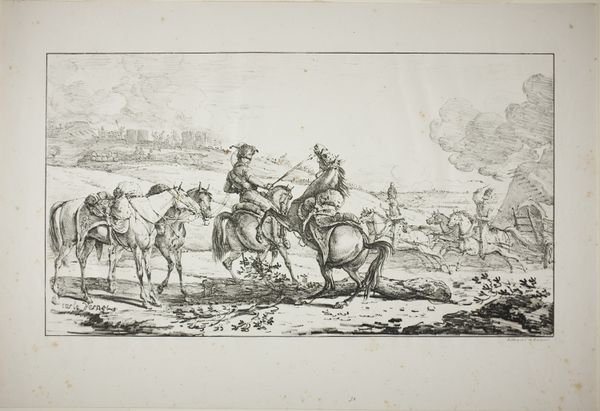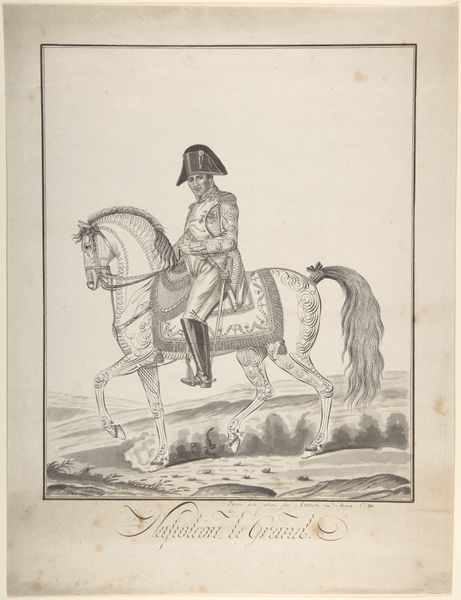
print, etching
# print
#
etching
#
landscape
#
etching
#
figuration
#
romanticism
#
genre-painting
Dimensions: height 76 mm, width 118 mm
Copyright: Rijks Museum: Open Domain
Curator: Let's take a closer look at "Spaanse koerier te paard," or "Spanish Courier on Horseback," an etching by Charles Beyer dating to 1819. What are your initial impressions? Editor: My eye is immediately drawn to the energy—that horse looks like it's truly flying across the landscape. You can almost feel the urgency in the rider’s posture and the motion of the horse's legs, kicking up dust. The whole composition has a rather fragile, sketchy quality. Curator: The print medium is so interesting in this artwork, reflecting a wider fascination in the 19th century with accessible imagery for an expanding audience. Beyer tapped into the visual language of Romanticism to portray the idea of swift communication and movement within an increasingly connected European context. Editor: It's fascinating to consider the labor involved in creating an etching. The time spent carefully incising lines into the metal, the skill required to transfer that image onto paper... this whole process is something printmaking enables. This wasn’t like dashing off a quick sketch, it was labor to spread information and artistry at the same time. And consider how many prints could be produced using a single plate! Curator: Indeed. And that reproducibility contributed to the shaping of public perception about other cultures. Genre painting became popular, catering to a taste for the exotic and unfamiliar. We have to question to what extent Beyer’s interpretation relies on accepted notions of "Spanishness." Consider the role this kind of art plays in both expanding horizons, but possibly, in consolidating cultural hierarchies. Editor: You bring up a good point. This print certainly is romanticizing something: an entire mode of transmitting messages, sure, but what about that material reality again? What kind of pressures was that rider under to move with such haste, what wages were paid, or were the working conditions tolerable? Was this an etching for every kind of person, or simply the rising bourgeois? Curator: Thinking about those elements helps give us a more complete picture of the moment. Thank you for pointing to all of this. Editor: It just shows that even seemingly simple images are layered with context and material implication. Looking closely always rewards curiosity!
Comments
No comments
Be the first to comment and join the conversation on the ultimate creative platform.
